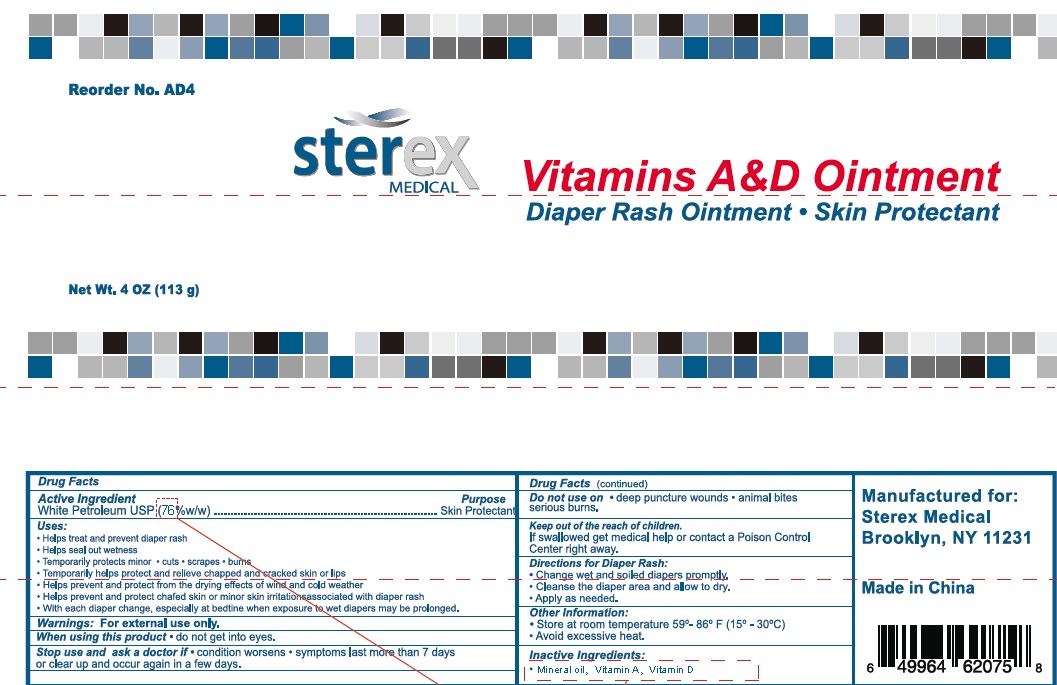Vitamins A And D | White Petroleum Ointment while Breastfeeding

What is Vitamins A And D | White Petroleum Ointment used for?
Brief: Skin Protectant
I am currently breastfeeding and I want to know if using Vitamins A And D | White Petroleum Ointment is safe for my kid? Does it have any effect on milk production?

Vitamins A And D | White Petroleum Ointment Breastfeeding Analsys
Petrolatum while Breastfeeding
Low RiskCAS Number: 8012-95-1
Mineral oil, paraffin or petroleum jelly is a saturated hydrocarbon derived from petroleum. The length of molecular chain may range from 15 to 40 carbons with a molecular weight between 200 and 600 daltons.It is used as a laxative, also in cosmetics, as emollient and as excipient in topical products for the skin. LAXATIVE: Mineral oils with more than 34 carbons (480 daltons) are not absorbed, or, only have minimal absorption through the intestine being this a reason for which those are that should be used on humans (Hagemann 1998). Infant daily intake should be nil or less than 4 mg / kg. For oils with less than 25 carbons daily intake should not exceed 0.2 mg / kg.When used as a laxative it has been suggested, (Mahadevan 2006), although weakly evidence based, that it may interfere with the absorption of liposoluble vitamins (Gattuso 1994).Infants whose mothers received this treatment did not suffer any change on their usual bowel movements (Baldwin 1963). COSMETICS as lotions and creams (body, hands or breast) and lipsticks are a source to accumulation of saturated hydrocarbons in body fat tissue (Concin 2011). Paraffin-containing breast creams significantly increase paraffin concentration in breastmilk (Noti 2003, Concin 2008) which is a reason to be avoided as they may increase the infant's daily intake to 40 mg / kg (Noti 2003). During breastfeeding it should be wise to avoid the use of paraffin-containing creams and/or having them restricted to a minimum, not to apply them on the breast or only at least as possible when they are part of the excipient of an important topical treatment provided residual traces are been thoroughly removed before the next feeding at the breast. The use of mineral oil as a laxative should be replaced by other less risky product. Local injection of paraffin for allegedly aesthetic purposes (breast augmentation or others) is a common practice in Eastern and Southeastern Asia, has often serious complications (Alagaratnam 1996, Zekri 1996, Ho 2001, Markopoulos 2006) which is a practice pending of eradication (Di Benedetto 2002). Although published data on it is lacking, it is presumed that paraffin concentrations in breastmilk would be greatly increased in these cases.
What should I do if already breastfed my kid after using Vitamins A And D | White Petroleum Ointment?
During whole lactation period you shall first discuss with your doctor and then together you shall decide whether you shall take that drug or not however if you have already taken Vitamins A And D | White Petroleum Ointment then you shall inform your doctor, But you should not be worried too much as Vitamins A And D | White Petroleum Ointment comes in category of low risk drug.
My health care provider has asked me to use Vitamins A And D | White Petroleum Ointment, what to do?
Vitamins A And D | White Petroleum Ointment comes in category of low risk and if your doctor is aware that you are breastfeeding it should be ok to use
If I am using Vitamins A And D | White Petroleum Ointment, will my baby need extra monitoring?
Not much
Who can I talk to if I have questions about usage of Vitamins A And D | White Petroleum Ointment in breastfeeding?
US
National Womens Health and Breastfeeding Helpline: 800-994-9662 (TDD 888-220-5446) 9 a.m. and 6 p.m. ET, Monday through Friday
UK
National Breastfeeding Helpline: 0300-100-0212 9.30am to 9.30pm, daily
Association of Breastfeeding Mothers: 0300-330-5453
La Leche League: 0345-120-2918
The Breastfeeding Network supporter line in Bengali and Sylheti: 0300-456-2421
National Childbirth Trust (NCT): 0300-330-0700
Australia
National Breastfeeding Helpline: 1800-686-268 24 hours a day, 7 days a week
Canada
Telehealth Ontario for breastfeeding: 1-866-797-0000 24 hours a day, 7 days a week
